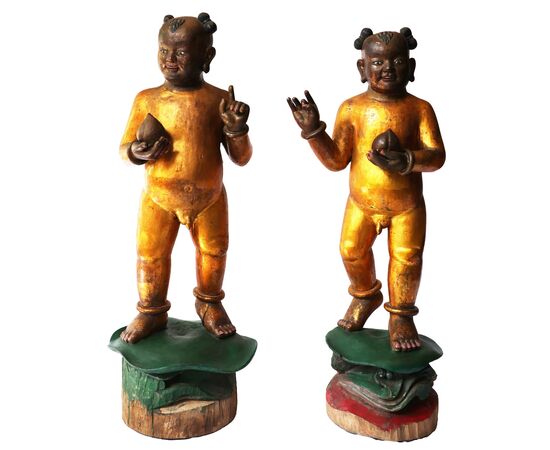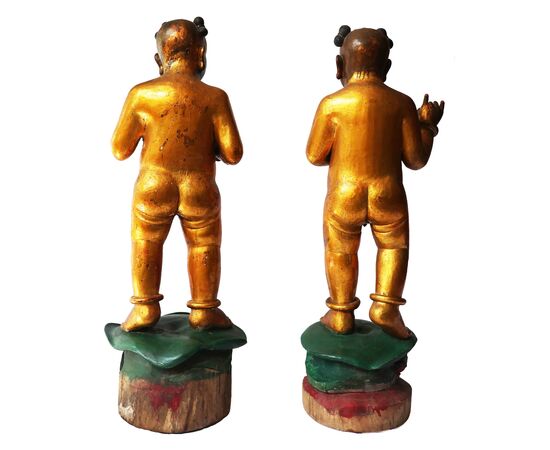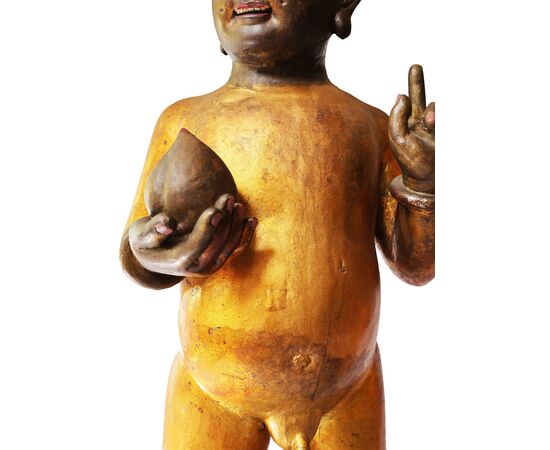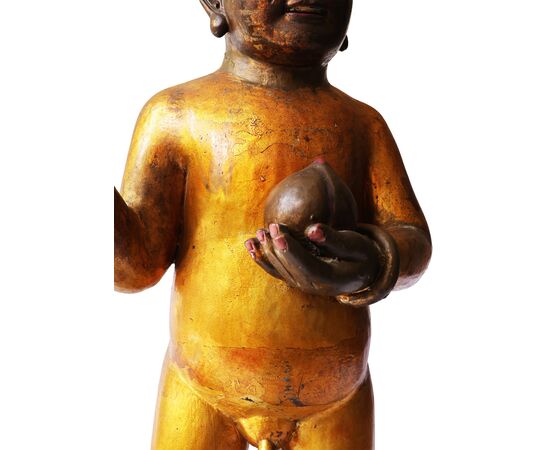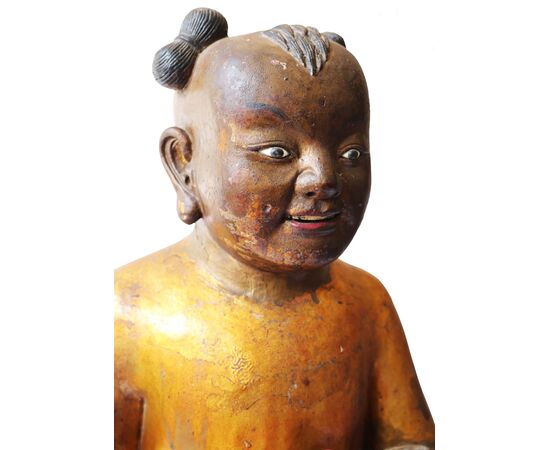Pair of carved and lacquered wooden sculptures, China, Qing Dynasty, Guangxu period (1871-1908)
Description
Pair of gilded and lacquered carved wood sculptures. The style is typical of late Qing popular and votive Chinese art. The iconography of "lucky children" (??, tongzi) was widespread in temples and homes as a symbol of prosperity, numerous descendants, and divine blessing. Both figures hold a fruit (probably a peach, a symbol of longevity in Chinese culture) in their left hand, while with their right hand they make different gestures, one with a raised index finger, the other with a hand in a mudra position (symbolic gesture). They were probably votive or decorative statues for domestic altars or temples, invoking prosperity, fertility, and long life.
These sculptures are best identified as tongzi (??, "attendant children"). Traditionally depicted as young boys, often naked or with minimal clothing, with the typical hairstyle of children, consisting of buns or side buns. They often hold symbolic objects such as peaches, lotus flowers, or scrolls, all auspicious objects.
Dimensions
HxWxD 98cm x 30cm x 32cm
Provenance
Private collection
Conditions
Defects and restorations.

